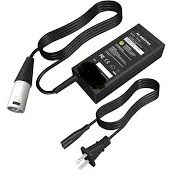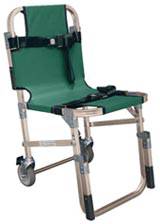Home » Emergency Medical Supplies » Battery Operated Stair Climber Making Evacuation and Daily Life Easier » Battery Operated Stair Climber Making Evacuation and Daily Life Easier
Battery Operated Stair Climber Making Evacuation and Daily Life Easier

Replacement Casters for MS3C Model Carts
Retail Price: $69.95
Your Price: $59.99
 Unit: pair
Unit: pair

Replacement Charger for MS3C-300TSB Evac Chair
Retail Price: $58.95
Your Price: $49.95
 Unit: single
Unit: single

Emergency Rescue Evacuation Chair
Retail Price: $1,397.37
Your Price: $1,105.71
 Unit: single
Unit: single
Legs are a marvelous component of our anatomy. The combination of nerves, muscles, bones, and tissue works with various other organs, including the brain, to ensure we walk to the grocery store and climb stairs. However, whether through age, trauma, disease or illness, we may lose this ability. When this happens, our home can become a prison. If we live in a two-story or split level residence, we may be forced to remain downstairs. If we live in a condo or apartment building, we may find ourselves more often than not staying home rather than risking the stairs or even the elevator. The same applies to those who work in an office building, commercial structure or another similar facility.
If confined to a wheelchair, stairs always represent a challenge in the case of an emergency or even everyday use. In order to make sure of full use of the house and/or allow freedom to move up and down stairs in a variety of circumstances, it is essential to consider the purchase of some form of equipment capable of both ascending and descending stairs.
Choices
Life is always about making choices. Even in the case of finding a mobility agent, we have free will. The market place is replete with a variety of products designed to aid people with mobility issues. Among the two most common ones are:
- Chair lifts
- Evacuation chairs
Both have their advantages and disadvantages. Both are available in different styles and models. However, before making a decision, you need to look at various factors that should influence your selection. You must consider:
- Purpose: What is the purpose of the device? What is it to help with? Does it need to be suitable for an individual alone or should it also address the issues surrounding the needs of a caregiver? Is it for daily use or only for emergencies?
- Environment: What type of environment is the device designed for? What type of environment is your commercial or residential facility?
- Space: How much space can you allot for the mobility device? Are their restrictions?
- Alterations: Can you make any alterations in the environment? Are you allowed to make attachments to the walls or stairs? In some commercial and residential facilities, it is not possible to alter or make additions to accommodate such things as chair stairs.
- Codes: Are there specific building codes or other legislative issues requisite before installation of any device?
It is necessary to consider these factors before opting for one type of mobility-aide device over another.
A Newer Option
Today’s market also offers a variation on these two methods designed for emergency evacuations. This version allows the caregiver to strap the wheelchair onto the device ensuring little time is spent shifting the disabled individual from their wheelchair to another chair device. This is an excellent means of transporting individuals down the stairs. It can also ascend stairs. Both with the facilitation of a caregiver.
These stair climbing devices differ in design. They can, however, fall into one of three types. These are:
- Carry
- Track
- Sled
Each has specific features that distinguish them. They also are optimal in different types of environments. More information about suitability is available in the latest edition of both the NFPA 101-Life Safety Code and NFPA 5000-Building Construction and Safety Code.
What to Look For in Stair Climbers
Whether carry, sled or track, when looking at stair climbers, it is important to ensure they embrace the essential characteristics you and the disabled individual require. Keep in mind the above criteria for what is possible in your home or even office. In most instances, this is a more viable option than stairlifts because they require no residential accommodation and no structural alteration. Stair climbers do not require permission from landlords, property owners or office managers. In fact, it is the law for owners and operators of factories and offices to install this or similar devices as part of an emergency plan.
Stair climbers should display the following features:
- Battery operated
- Adjustable to suit various sizes and type of wheelchairs
- Customized to meet the demands of the structure’s stairs
- Durable in construction, including the treads
- Lightweight making it easier to use with less train on a caregiver – those made of aluminum meet this criterion
- Easy for caregivers to adjust, secure and use quickly
- Operates in confined spaces
- Controls are easy-to-read
- Versatile range of motion
- Stability
- Low maintenance
One further consideration, besides the price, is the issue of storage. The light weight of a batter operated stair climber is not enough. It is important that storage be a simple matter, easily handled. A warranty is also another factor to consider when purchasing this type of evacuation and climbing chair. No matter your selection, evacuation stair chairs are a beneficial tool in emergency evacuation either in your home or at work.














